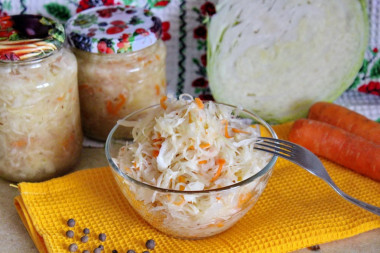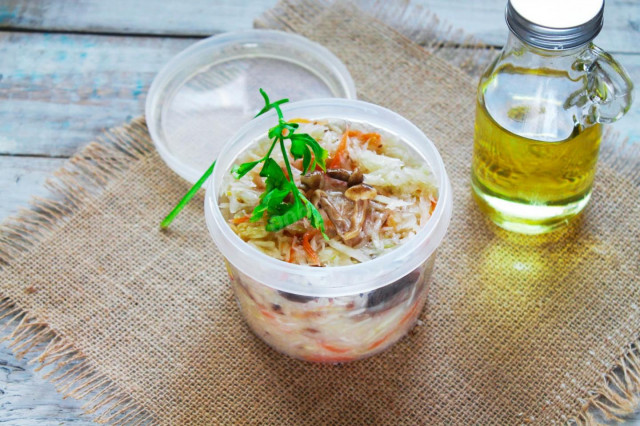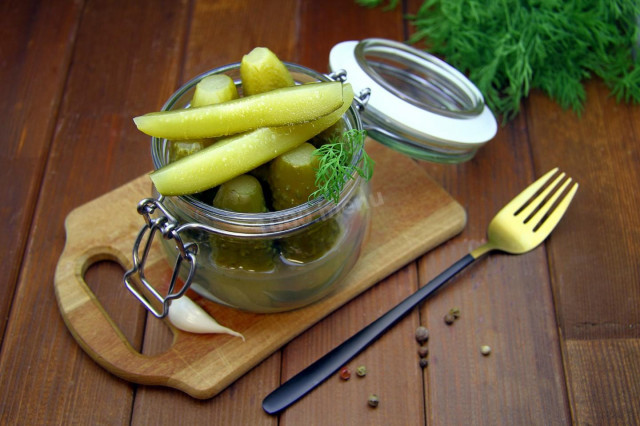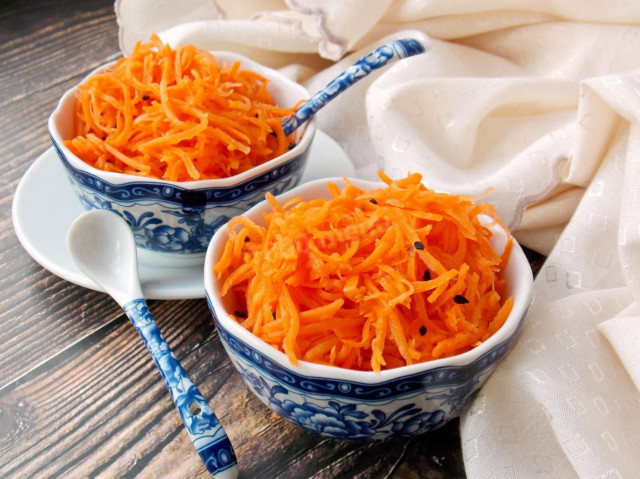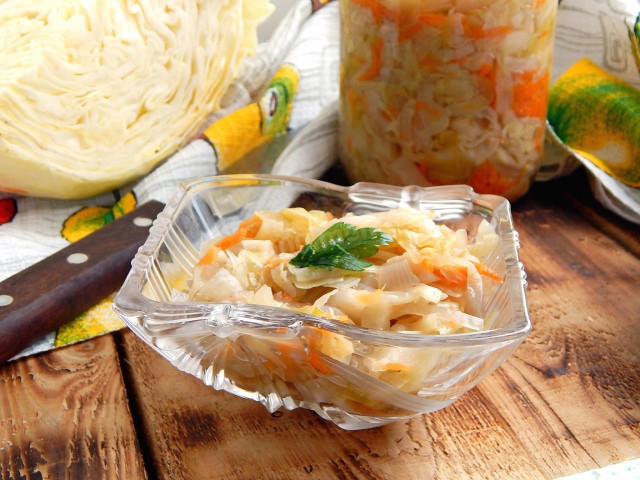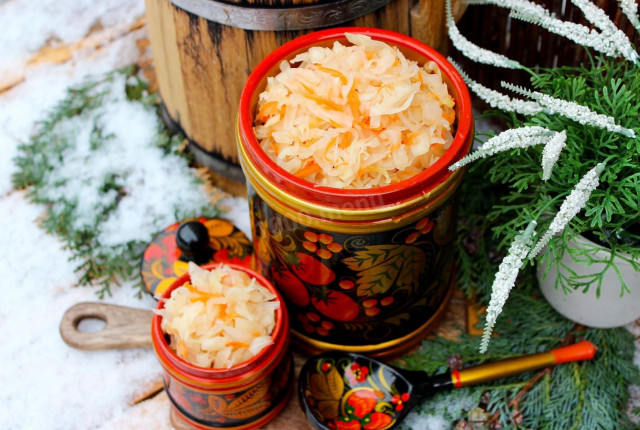Composition / ingredients
Step-by-step cooking
Step 1:

Prepare all the ingredients. Wash the carrots and peel them. We will remove the upper leaves from the cabbage.
Step 2:
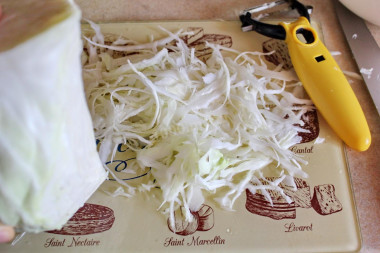
Now chop the cabbage finely. It is very convenient to do this with a special device. We cut so much cabbage that it is enough to tamp into a 2-liter bottle.
Step 3:
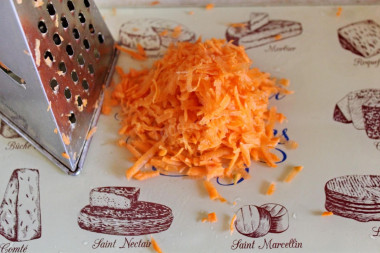
Grate the carrot on a medium grater. You can also use a shallow one, if you like it better.
Step 4:
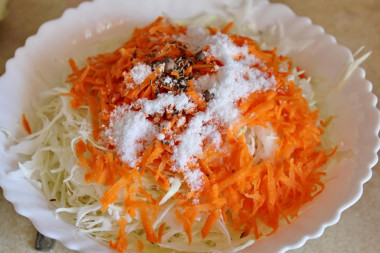
We transfer the chopped cabbage to a bowl or saucepan, we also put the grated carrot there. Pour cumin and pepper with peas. We press all this and mix it with our hands, squeezing and pressing a little. Then add 1 tablespoon of salt and press it again so that the juice begins to stand out.
Step 5:
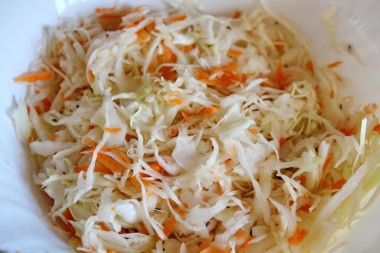
This is the mixture we should get. We put our cabbage with carrots and spices in a jar and tamp it down well. Cabbage should not be up to the top.
Step 6:

Then take 0.5 liters of water, add another 1 tablespoon of salt and mix until dissolved. Pour this brine into a jar of cabbage. The water should cover the cabbage, but not be all the way to the top. If there is not enough water, then pour a little more. Then put a plastic lid of a smaller diameter in a jar on the cabbage, and put a jar of water on it, which will serve as a load for pressure on the cabbage. And put a bottle of cabbage in a warm place.
Step 7:

Cabbage will be fermented for about three days. During the day, it is necessary to periodically pierce the cabbage with a wooden stick so that gases come out and the cabbage does not become bitter. If you put the cabbage to the top, then put the bottle to some container, because over time the brine will pour out of the jar. After three days, try cabbage. If it is crunchy and sour, and even more gas is not released, bubbles do not come from below, then the cabbage is ready.
When the cabbage is ready, it can be packaged in liter or half-liter cans, screwed with a lid and put in the refrigerator or other cool place for storage.
If you don't like the taste or smell of cumin, you can not add it to cabbage.
When serving cabbage, you can eat it right like that, or you can make a salad out of it by adding green or onion and vegetable oil.
Bon appetit!
The shelf life of sauerkraut directly depends on the ambient temperature:
- in the cellar and in the refrigerator, subject to the tightness of the container and compliance with the temperature regime from 0 to +4 degrees, the product remains usable for up to 5-8 months;
- it is stored frozen for up to a year (you can put the finished sauerkraut in plastic bags, seal it tightly, leaving enough space for the brine to freeze, and put it in the freezer);
- at room temperature, the product will deteriorate in 3 days;
- at a temperature of +10 degrees, cabbage will stand no longer than 10-15 days.
Caloric content of the products possible in the composition of the dish
- Green cabbage - 46 kcal/100g
- Fresh frozen green cabbage in a package - 45 kcal/100g
- Carrots - 33 kcal/100g
- Dried carrots - 275 kcal/100g
- Boiled carrots - 25 kcal/100g
- Cumin - 333 kcal/100g
- Black pepper peas - 255 kcal/100g
- Water - 0 kcal/100g
- Sea salt - 0 kcal/100g


